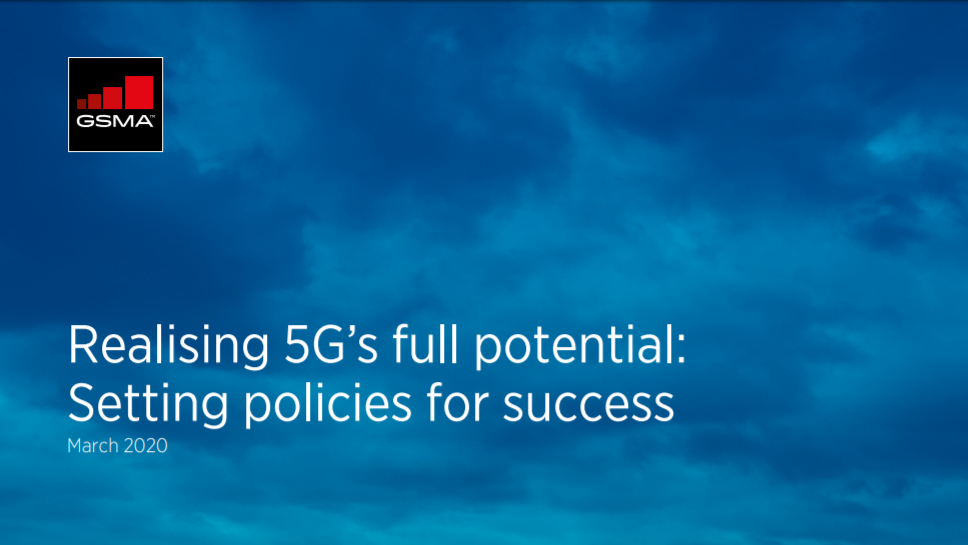New GSMA report reveals verdict on 5G rollout
The latest GSMA report offers advice and context for mobile network operators and enterprises looking to take 5G to the next level.

In its latest report, the GSMA – the global industry organisation that represents 750 mobile operators around the world – has revealed that, despite a great deal of progress being made with the global 5G rollout, there is still a considerable amount of work to be done.
The GSMA report, titled ‘Realising 5G’s full potential: Setting policies for success’,has been created in partnership with Boston Consulting Group (BCG), and offers advice and context for mobile network operators and enterprises looking to take 5G to the next stage of its development.
“In the past, we have identified six regulatory levers that can foster infrastructure investment,” the report explains. “Making additional affordable spectrum available, facilitating access to site locations, enabling small cell deployment, facilitating deployment of backhaul, permitting the freedom to establish network sharing agreements, and harmonizing power density limits.”
Concerted steps
"“The timelines presented are approximations and should not be considered as a playbook for an ‘ideal’ 5G infrastructure deployment strategy."
GSMA report.
And, according to the 5G research from the GSMA, governments around the world have taken concerted steps in most of the highlighted areas. However, according to the report, they will need to do more to stimulate full 5G deployment.
“There are also two additional areas in which action by policy makers and regulators can spur the rollout of 5G: providing adequate subsidies for deployments, and providing regulatory flexibility for vertical partnerships,” the report states. “Seizing the full macroeconomic opportunity of 5G requires concerted commitments from policy makers and the industry in all of these areas.”
The report concedes that infrastructure is expensive, and the necessary investments cannot and will not happen all at once, admitting that they need to be phased in sequence with the commercialisation of the uses they should unlock.
“The timelines presented [in the report] are approximations and should not be considered as a playbook for an ‘ideal’ 5G infrastructure deployment strategy,” the report says. “They represent a hypothetical rollout by a representative operator with the ambition to realise the full 5G vision from a mobile network capability perspective by 2027. Actual timelines will of course vary from market to market, depending on such factors as spectrum release and local geographic and demographic conditions.”
Get up to speed with 5G, and discover the latest deals, news, and insight!
The three waves of investment
The three waves of investment, which have been highlighted in the ‘Realising 5G’s full potential: Setting policies for success’ report, are as as follows:
Wave 1: Laying the Ground (2019–2021)
During Wave 1, operators invest in capacity-driven inner-city roll-out with new 5G bands reflecting the rollout pattern we are currently observing. Additionally, edge data centers need to be installed to enable the first low-latency use cases, such as cloud gaming and early applications of mixed and virtual reality.
Wave 2: Expansion (2022–2024)
This wave 2 will extend the reach of 5G as operators start to cover major transit routes (highways and rail tracks) to enable the first generation of (semi-) autonomous vehicles (such as autonomous trucks). Depending on spectrum availability, we will start to see mmWave densification in inner cities and hot spots (shopping centers, train stations, and sports arenas, for example).
Wave 3: Full Vision (2025 – 2027)
In Wave 3, the deployments of micro-edge computing centers, as well as rural deployments and mmWave densification will be completed. In addition, street-by-street coverage will expand to second tier transit routes — regional roads, in particular.
The full report can be viewed and downloaded here, and it provides a number of estimates on the investments required to realise 5G’s full potential, whilst setting out measures by industry and policymakers to set the conditions for success.

Dan is a British journalist with 20 years of experience in the design and tech sectors, producing content for the likes of Microsoft, Adobe, Dell and The Sunday Times. In 2012 he helped launch the world's number one design blog, Creative Bloq. Dan is now editor-in-chief at 5Gradar, where he oversees news, insight and reviews, providing an invaluable resource for anyone looking to stay up-to-date with the key issues facing 5G.

